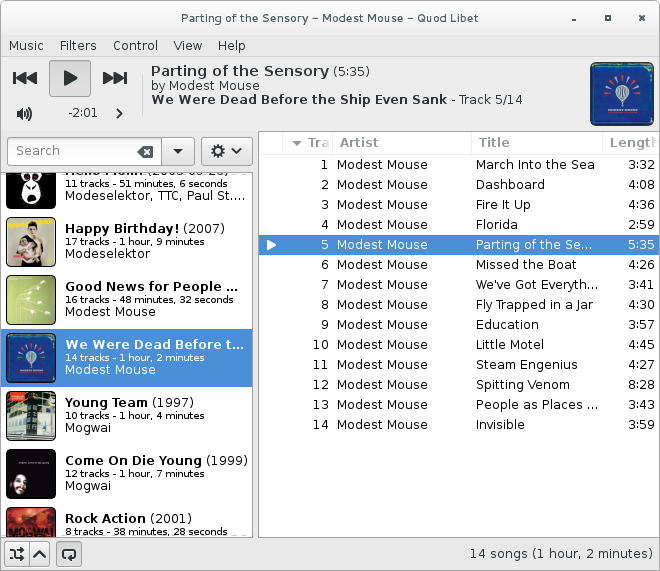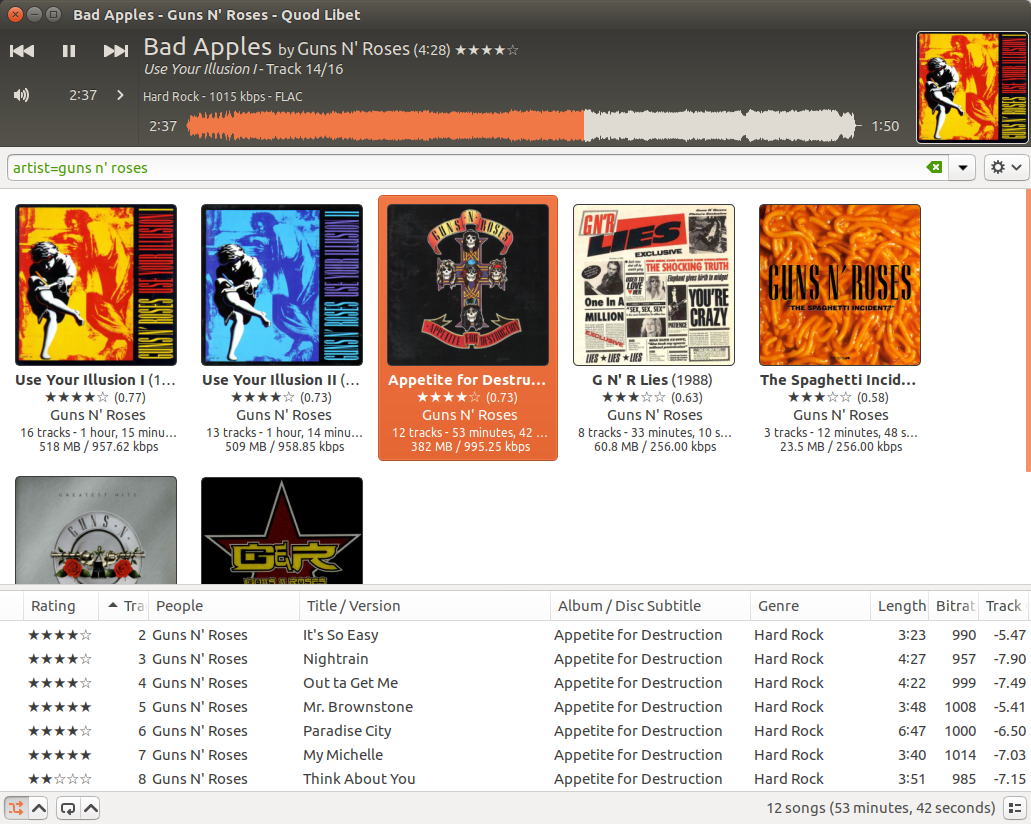Album Browsers
Identifying albums
Throughout Quod Libet, albums are grouped by examining the album tag on
individual songs. To support distinct albums with the same name, groups of
songs with the same ‘album’ tag are further inspected for the presence of
one of three tags: album_grouping_key, labelid, and
musicbrainz_albumid, in that order. If a song has any of these, it will
be used to identify the album it belongs to along with the album tag.
In short, if more than one album in your library has the same name, use one
of the secondary tags to separate them. The MusicBrainz plugin will add
musicbrainz_albumid tags automatically, and may be the easiest solution
for adding identically-named albums to your library.
Album List Browser

The Album List browser makes it easy to treat your music collection as a set of albums, presented on the left, rather than as a set of songs, via album-centric enhancements to viewing, sorting, and searching.
You can (configurably) display the album art next to each album to allow faster identification of your albums (plus it’s just prettier…).
Extra features related to searching, sorting and presenting albums are detailed below.
Cover Grid Browser

The cover grid is another album-like browser that places more emphasis on the album art.
It has a search similar to album list (see the section below), and configuration of its own (including a flexible per-album display area).
Searching
After creating the list of albums using the heuristic described above, the Album List browser then computes information across all the songs in an album. While the browser uses sensible defaults as to exactly how this information is compiled, it also exposes the choice while searching. This is most useful with numeric searches. For example, to find the albums with an average rating of 0.6 or greater, you can search for
#(rating >= .6)
This works because the Album List averages the values of numeric tags by default. To find the albums with any song with a rating of .6 or greater, though, you have to add something to your search:
#(rating:max >= .6)
These tag suffixes work for any numeric search. The options are min,
max, sum, and avg (the default).
For string tags, the values which get searched are created by joining all of the underlying songs’ values together. The albums in an Album List also have a few tags which are computed in a particular manner. A few of the interesting ones:
~#lengthis computed as the sum of the length of the underlying songs.
~#tracksand~#discsare the total number of songs and discs in an album.
Also useful, though not strictly album-only:
~#filesizeis the size on disk of a file in bytes (but can be formatted for humans)
~peopleis computed from all underlying tracks, with duplicate entries removed.